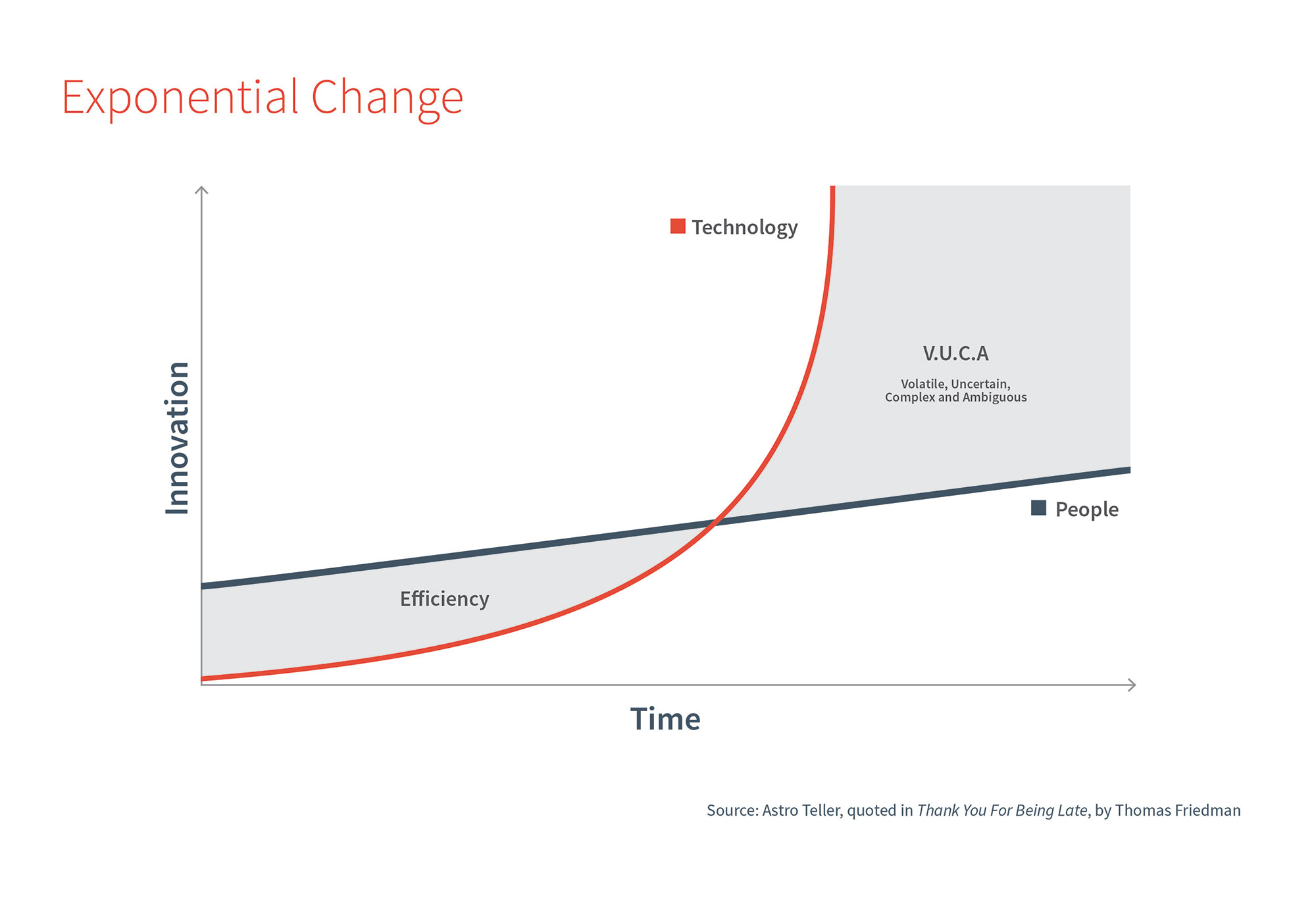Digital transformation–it isn't just about technology
Digital solutions have become synonymous with change management. And while new technologies can deliver a lot of value to companies, they can also change the way employees work and can even be disruptive. Ironically, the implementation of new technology–overall a helpful tool–can also pose challenges around human behavior and communication.
“The only constant in life is change.” – Heraclitus
Our world will forever be in a constant flux of change; we could confidently say that change is the new norm. Consequently, organizations need to be able to implement change management effectively. In fact, the ability to successfully manage change is one of the most important skills required to realize the benefits of transformations.
Change, communication, culture
As change becomes the new norm for organizations, it’s important that organizations set the expectation for an ongoing momentum of change with all employees. Having a clearly articulated purpose, set of goals, and corresponding strategies is the first step, accompanied by clear communication about the behaviors required to implement them. Often, however, this can be met with a degree of employee resistance.
The key to this challenge is to understand the underlying cause of resistance. Reluctance, concerns, and fears are all natural and healthy parts of the human transformative process. Rather than see resistance as a sign that something is wrong and should be avoided, businesses can mitigate the challenge by anticipating resistance so it can be planned for, addressed, or eliminated. Often, what employees resist is usually not the technical change, but the social aspect of it–that is, the change in their human relationships that generally accompanies technical change. In order to mitigate resistance, organizations need to educate, reassure, and involve employees in the transformation, and communicate the reason for it.
Business imperatives vs. good ideas
In my experience, I’ve seen clients trying to implement new ideas and technologies without really thinking about what the business actually needs.
Of course, it may very well be a good idea that provides many benefits–but is it something that’s necessary? Is there a problem that needs to be solved? What happens if the organization doesn’t change? These are just some of the questions that ought to be asked.
The problem that the change is solving needs to be critical enough that people want to go through adoption. Because adoption isn’t easy.
It requires a lot of time and energy, and every project will have side effects like a learning curve, temporary lull in productivity, and potentially lowered morale.
My key takeaway? Before organizations embark on their journey, time should be spent on determining if the idea is an imperative, not just a good idea, and if sufficient resources have been allocated to tackle the challenges ahead.
Technology? It’s still about the people
This is where we come to technology. It’s new, lucrative, and exciting. So much so that we sometimes forget all the other stuff that comes with it. Digital transformations are more than just a technology change–it still fundamentally comes down to the “man behind the curtain." The focus needs to be on people and the behaviors behind the technology.
Time and time again we see organizations implementing new technology that brings further challenges or is only half adopted, resulting in mediocre results. Organizations need to ensure that the adoption of any technology change is accompanied by proper training, communication, and transparency. Along the way of implementation, you’re going to learn what works and what doesn’t. And how you approach the feedback that you receive during the experimentation stage will set the stage for how successful adoption will be. Leaders need to be open to any new findings and have a clear vision for what they’re trying to achieve in order to make the best decisions.

At the end of the day, even with the fancy stage lights of the technology show, it’s still about the people backstage. The path to success is through proper change management–a fundamental discipline that highlights an organization’s most critical asset: the human dimensions of change.
So, what problem are you trying to solve?

Alison Szetho
Organizational effectiveness consultant, Advisory
Alison is an organizational effectiveness consultant, with a passion in helping organizations design and implement strategies, environments, and systems that deliver substantial performance improvements. With over eight years of experience working in statistics and management consulting, Alison brings strong analytical skills, creativity, and a focus on employee engagement to her consulting work. Alison has focused her career on supporting clients with operating model design, organizational design, and organizational change as part of large-scale business transformations, typically associated with shifts in business strategy, technology disruption, and cost reduction initiatives. She has been an organizational lead, program manager, and change lead for several large-scale transformation programs in North America and South America, and across a variety of industries including mining and metals, financial services, and governments.